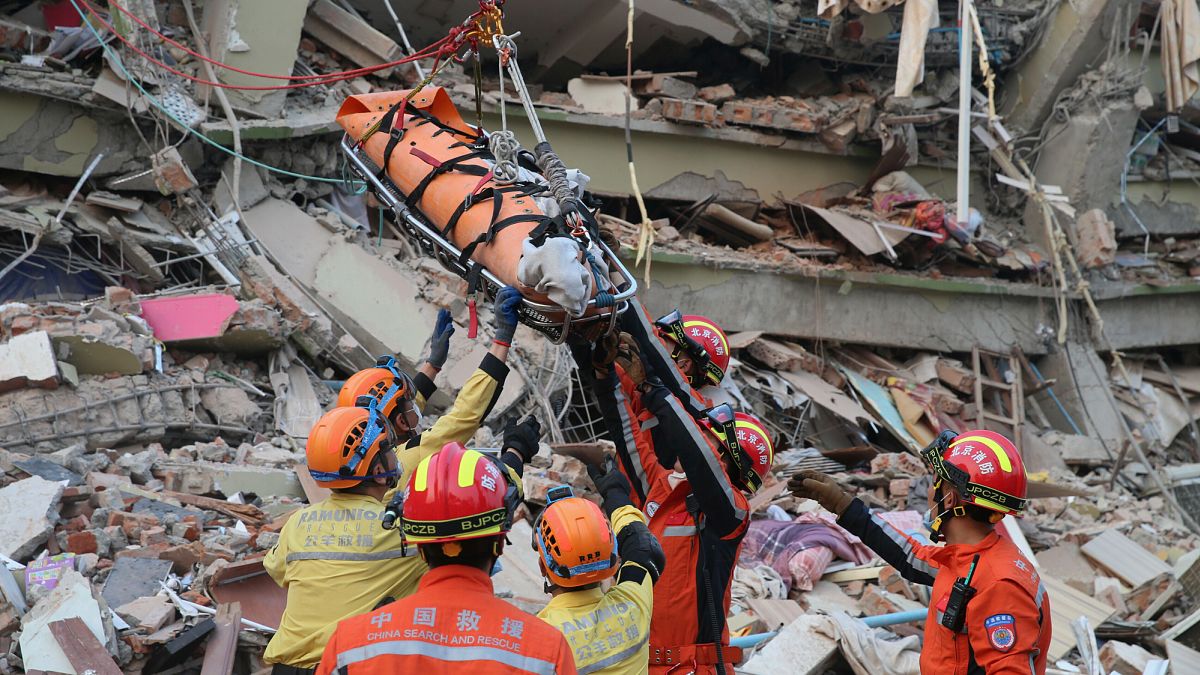Myanmar, where an ongoing civil war began in 2021, was already one of the most challenging places in the world for aid organisations to operate in.
The death toll from last week’s powerful earthquake in Myanmar has risen above 2,000, as the UN and aid groups warn the disaster could exacerbate hunger and disease outbreaks in a country already wracked by food shortages, mass displacement and civil war.
Friday’s 7.7-magnitude quake, whose epicentre was near Mandalay, the country’s second largest city, killed at least 2,056 people, the ruling military junta said on Monday.
More than 3,900 people were injured and 270 others remain missing, it added.
The earthquake destroyed hundreds of buildings and buckled roads across a swath of central Myanmar.
As a result of its ongoing civil war and its poor infrastructure, Myanmar was already one of the most challenging places in the world for aid organisations to operate in. Now, its humanitarian crisis is set to worsen.
“This latest tragedy compounds an already dire crisis and risks further eroding the resilience of communities already battered by conflict, displacement, and past disasters,” the UN’s Myanmar country team said, calling for unimpeded access for aid convoys, medical personnel and assessment teams.
“Even before this earthquake, nearly 20 million people in Myanmar were in need of humanitarian assistance,” said Marcoluigi Corsi, the UNICEF Representative to Myanmar.
Impact of the 2021 military coup
Rescue efforts are complicated by the bloody civil war which started in 2021, following the military coup that ousted the elected government of Aung San Suu Kyi.
The putsch initially sparked nationwide protests, but they soon morphed into a significant armed resistance.
More than three million people have so far been displaced by the fighting, according to the UN.
Lauren Ellery, the deputy director of programmes in Myanmar for the International Rescue Committee (IRC), said that the part of the country worst hit by the earthquake was seriously damaged by flooding last year.
It is also an area where many of the country’s internally displaced people have sought refuge.
Since the earthquake, many people have been sleeping outside, either because their homes have been destroyed or because they are worried that the continuing aftershocks might bring them down.
With the monsoon rains starting in May, finding people shelter was going to be a major challenge, she said.
“You have these flooding events…that lead to disease outbreaks, they lead to displacement and food insecurity, but then with damaged hospitals and clearly damaged sanitation systems, it’s really increasing the risk of disease outbreaks,” she added.
“It’s pretty much unparalleled stress on many, many vulnerable people.”
Full extent of devastation not yet clear
Aid agencies in Myanmar say their teams on the ground still do not have a true picture of the devastation.
“We’re really not clear on the scale of the destruction at this stage,” Ellery said.
“They were talking about a town near Mandalay where 80% of the buildings were reportedly collapsed, but it wasn’t in the news because telecommunications have been slow.”
And groups the IRC works with reported that some places have been physically cut off by landslides, she said.
The World Health Organisation (WHO) said it has reports of three hospitals being destroyed and 22 partially damaged in the region.
“The scale of deaths and injuries is not yet fully understood and the numbers are expected to increase,” the WHO said in a report.
“The earthquake’s devastation has overwhelmed health care facilities in the affected areas, which are struggling to manage the influx of injured individuals,” it added.
“There is an urgent need for trauma and surgical care, blood transfusion supplies, anaesthetics, essential medicines and mental health support.”
An artificial intelligence analysis of satellite images in Mandalay by Microsoft’s AI for Good Lab showed 515 buildings with between 80% and 100% damage, and another 1,524 with between 20% and 80% damage.
It was not clear what percentage of the city’s buildings that represented.
Relief efforts have been hampered by severe damage to roads, bridges and hospitals, as well as by power outages, fuel shortages and patchy communications.
A lack of heavy machinery has also slowed search-and-rescue operations, forcing many people to search for survivors by hand.
The National Unity Government, which represents Suu Kyi’s ousted government, has said the country’s military has continued ground attacks in earthquake-affected areas.
This comes as aid organisations and the UN call for a ceasefire so that aid can be properly distributed.

